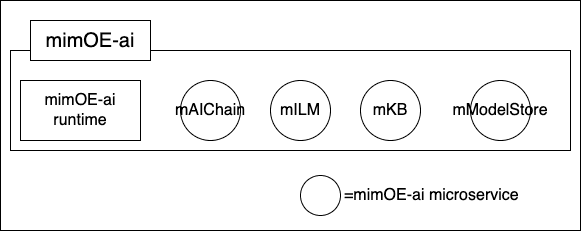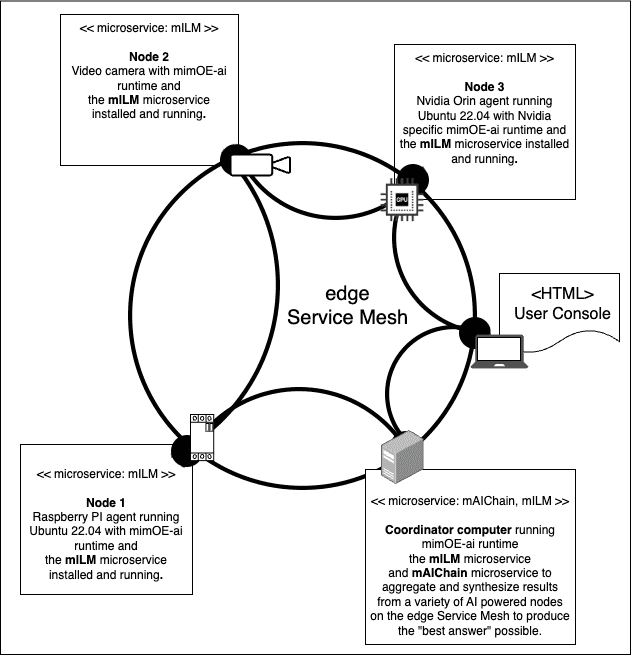- Introduction to mim OE
- How Does mimik ai Integrate Artificial Intelligence with the mim OE Runtime?
How Does mimik ai Integrate Artificial Intelligence with the mim OE Runtime?
mimik ai is a product intended to make developing AI-powered applications more accessible, secure, and cost-effective.
In terms of application development, mimik ai is organized into two parts. The first part is the mim OE runtime. The mim OE runtime is the technology that is the runtime that enrolls a machine into the edge Service Mesh and provides discovery capability to other mim OE runtime enabled machines running on the edge Service Mesh. The mim OE runtime is also an API gateway to the various edge microservices running on a given machine.
The second part of mimik ai is the various edge microservices that enable interaction with AI assets such as large language models (LLM) and vector databases. These assets are hosted locally on a machine running the mim OE runtime. These microservices are mILM, mAIChain, mKB, and mModelStore.
The figure below describes the various deployment units.
mimik ai makes it so applications can access various forms of machine learning models without needing to be connected to the cloud. This is important because it allows applications to run AI models on the edge, which can be faster and more secure than running these services remotely. Instead of relying upon AI models hosted in remote cloud locations, mimik ai takes advantage of edge Service Mesh technology to interrogate other computers and devices enabled with mimik ai that are running the mim OE runtime locally or on a local area network.
For example, using mimik ai technology and microservices, a developer can create an application that uses a video capture device running mimik's mModelStore microservice, a computer running an OpenAI model such as gpt-4-turbo locally and another machine that is running a special processor such as the Nvidia Orrin chipset.a A fourth machine running both mimik's mAIChain and mILM microservices acts a Coordinator Machine, accessing AI-driven results on the other machines.
The information from the other machines is analyzed by the controller machine. Then, a "best answer" response is created by the controller machine. The best answer is determined by synthesizing the output from all the other machines on the edge Service Mesh into a single response that is refined by mimik's artificial intelligence capabilities to be the best, most accurate answer possible.

